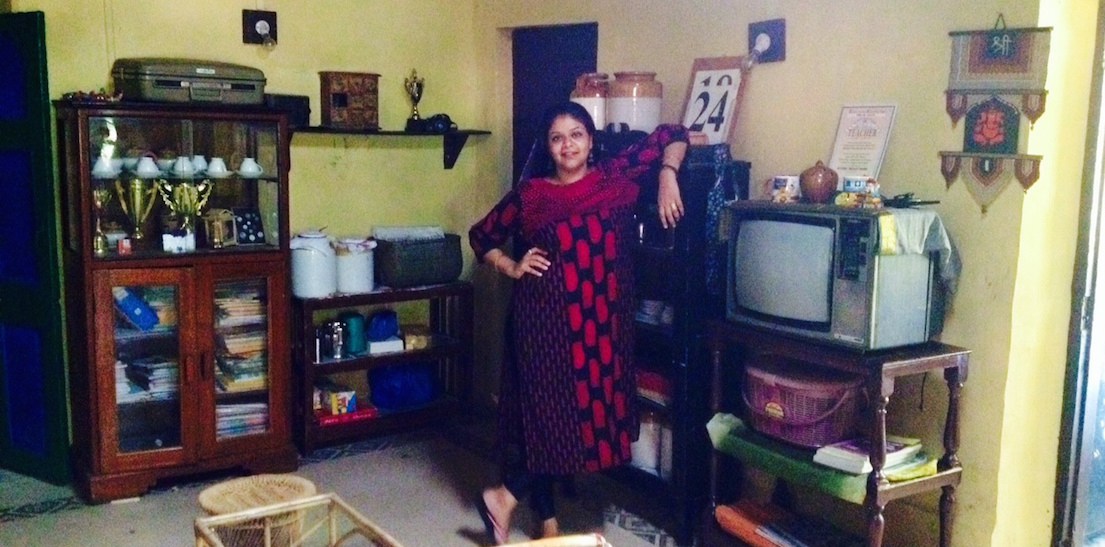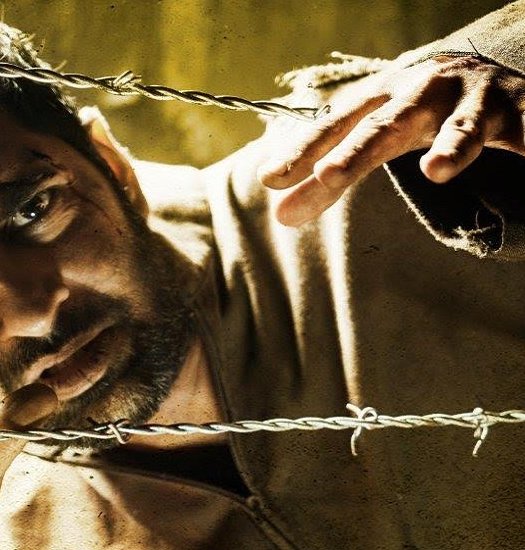I wanted the Production Design to be very close to reality – Boishali
From blockbusters like Special Chabbis and Rowdy Rathore to unconventional subjects like Margarita With A Straw, Crazy Cukkad Family and others, young Production Designer Boishali Sinha already has an enviable list of films to her credit. As her latest film, Chalk N Duster releases today, Boishali shares interesting details from the making of the film and her upcoming projects.

Boishali Sinha (Photo Credit – Imran Khan)
Tell us about the effort that you put in and challenges that you’ve faced while doing the production design of Chalk N Duster?
I had to put in a lot of extra effort for this film as Shabana (Azmi) mam and Juhi (Chawla) mam would take a lot of interest in whatever I was doing – the color theme, lighting etc. And it’s a very good thing that they took interest in the production design. Also there was a lot to do in the film as we have shot at three different locations.
READ: CHOR BAZAAR IS ONE OF THE BEST PLACES TO SOURCE PROPS
Where all has the film been shot? How did you’ll zero in on the school that has been used in the film?
The film has been entirely shot in Mumbai and a day or two was in Aurangabad. We primarily shot in two different schools in Mumbai – one was a college in Malad and the other one was Thakur Vidya Mandir in Kandivali. These schools matched the requirements that we were looking for. We wanted to show the stark change in the two schools – from a regular school to the transformed version of a school, which is more of a corporate these days. Of course there was lot of art direction and production design that I had to do.
What kind of references did you have in mind for this film?
I wanted it to be as close to reality as possible. The references were mainly schools that I had in mind. I didn’t have to do any Google search for it as I knew how an art room or a music room is like. There were a lot of things that I have used in the film. For instance, when we went to the schools I told the kids to draw and these real paintings were used in the film as well. Different classes and staff rooms were designed in a particular way. For some classes I also went through the NCERT books to know what all is being taught so that we could draw them on the charts.
So how many different sets did you’ll create for the film?
One was the main set, then we had the interiors of Shabana mam and Juhi mam’s houses. Apart from that, there is a dance sequence of an annual function, which took place on a set that we created.

On the sets of Chalk N Duster
Designing for Chalk N Duster must have been like revisiting school memories….
Oh yes! Because it’s been almost 10-11 years that I passed out of school. So the memories came back. In fact my mother and father both are teachers. And that proved quite helpful for me. Things that are happening in this particular film are something that I’ve heard while growing up.
Chalk N Duster stars Juhi Chawla and Shabana Azmi in key roles along with Divya Dutta, Zarina Wahab and Richa Chadha in vital roles. Is the film promoting a lot of female talent?
I won’t use the word promoting but of course it features a lot of female talent. When it comes to the technical aspect, there are very few female production designers and they didn’t choose me because I’m a woman. But as far as characters are concerned, it is a woman-centric film.
READ: I JUST LET THE CHARACTER BREATHE INSIDE ME
What kind of an experience was it working with veteran actors like Shabana Mam and Juhi Mam?
You get to learn a lot when you have such people around. Their homework was so accurate that I had to redo my homework. When Shabana mam was in character, she exactly knew what she had to do and what all had to be around. The same goes for Juhi mam.
Having recently done the production design for a mainstream film like Gabbar Is Back, how different was the experience on a small scale film like Chalk N Duster?
While working on Chalk N Duster, it never happened that I wanted something and the producer didn’t provide it. He never said that he didn’t have the money. So I never felt that I was working on a low budget film. Of course the scale is different, but I can’t compare the two films.

Stage set created for Chalk N Duster
Are big films more challenging due to their scale or do smaller films become tougher due to budgetary constraints?
Budget comprises of a lot of things. When a film has a budget of 60-70 crores, the number of shoot days increase. But when the budget is just 5-6 crores, the case is different. Chalk N Duster was shot in 55-60 days. A small scale film is definitely challenging because you have to deliver more in less amount of money.
From Total Siyapa to Crazy Cukkad Family, Special 26, Rowdy Rathore, Margarita With a Straw to Kya Kool Hai Hum 3, you have worked on various genres of films. But what kind of subjects do you prefer the most?
Period films interest me a lot. Luckily I’ve got a chance to be part of a period film called Sann Pachhattar, which will release in February this year. But yes! I like different types of film – be it a serious subject or an action film.
Tell us more about this period film that you are working on?
This is one film that I’ve loved working on. It is a political thriller set in the mid – 70s when the Emergency happened. I wasn’t very aware of this period and got to know about it only while working on the film. In this film, I’ve had to show the first mobile phone that came to India. I had to also make the first recording machine that was there during that time. One has to be very intense in something like this.
Besides this, there is also a period drama set that I’m working on. It is tentatively called ‘300’ and is based in 1971 Gujarat.
READ – PERIOD FILMS COME NATURALLY TO ME
How does one go about sourcing things for a period film?
Firstly there is the Internet. But at times even the Internet does not provide some information. In that case you have to consult books because accuracy is important. If you are showing the year 1975, you need to research at least ten years before and ten years later as well.
Overall, how was the experience of shooting Sann Pachhattar.
It was very challenging. We shot entirely in Lucknow, which was one big challenge. In a place like Mumbai you can get anything, anytime. But in Lucknow a shop opens at 10 a.m. and closes at 6 p.m. And for a period film you have to be perfect in each frame as period films are either criticized or loved a lot.



